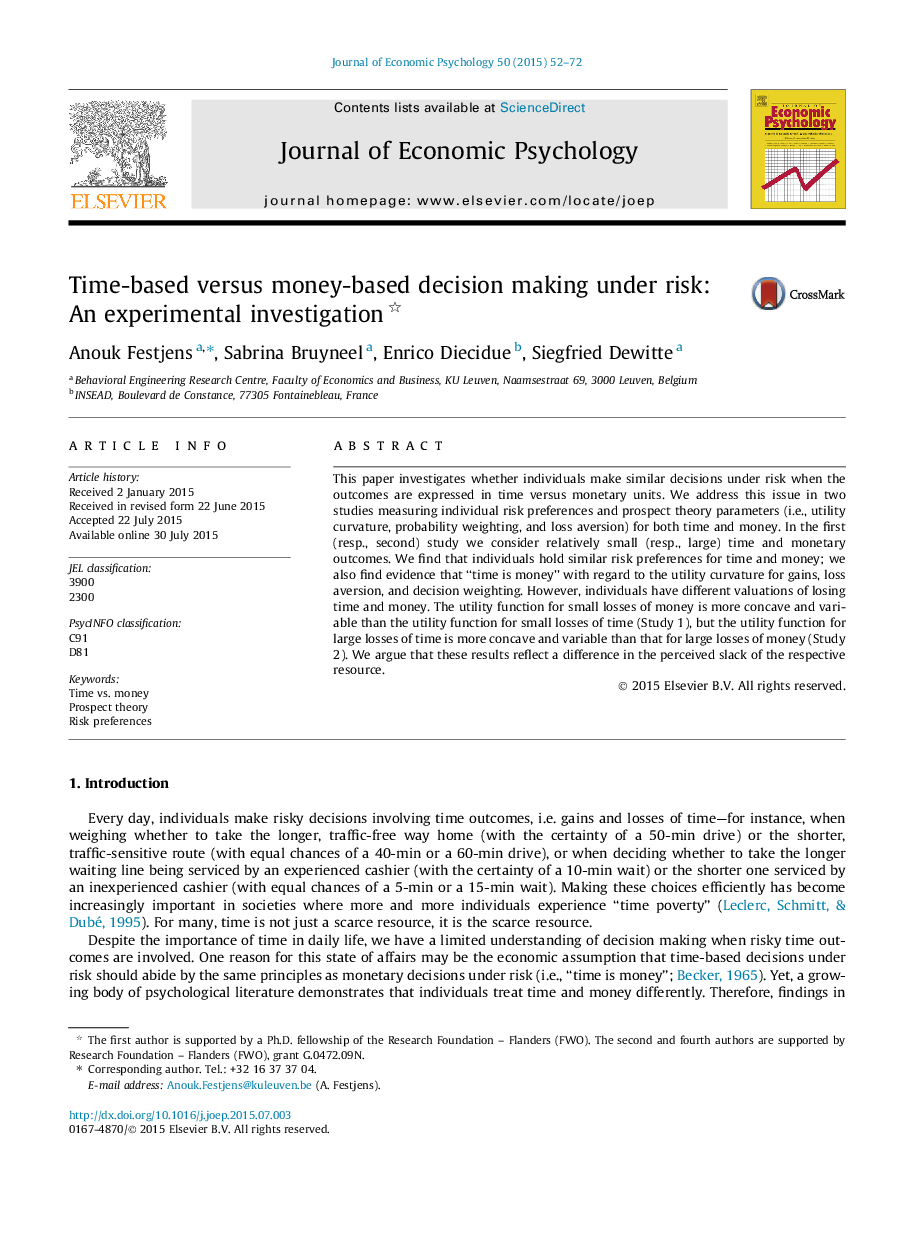| Article ID | Journal | Published Year | Pages | File Type |
|---|---|---|---|---|
| 7244588 | Journal of Economic Psychology | 2015 | 21 Pages |
Abstract
This paper investigates whether individuals make similar decisions under risk when the outcomes are expressed in time versus monetary units. We address this issue in two studies measuring individual risk preferences and prospect theory parameters (i.e., utility curvature, probability weighting, and loss aversion) for both time and money. In the first (resp., second) study we consider relatively small (resp., large) time and monetary outcomes. We find that individuals hold similar risk preferences for time and money; we also find evidence that “time is money” with regard to the utility curvature for gains, loss aversion, and decision weighting. However, individuals have different valuations of losing time and money. The utility function for small losses of money is more concave and variable than the utility function for small losses of time (Study 1), but the utility function for large losses of time is more concave and variable than that for large losses of money (Study 2). We argue that these results reflect a difference in the perceived slack of the respective resource.
Related Topics
Social Sciences and Humanities
Business, Management and Accounting
Marketing
Authors
Anouk Festjens, Sabrina Bruyneel, Enrico Diecidue, Siegfried Dewitte,
